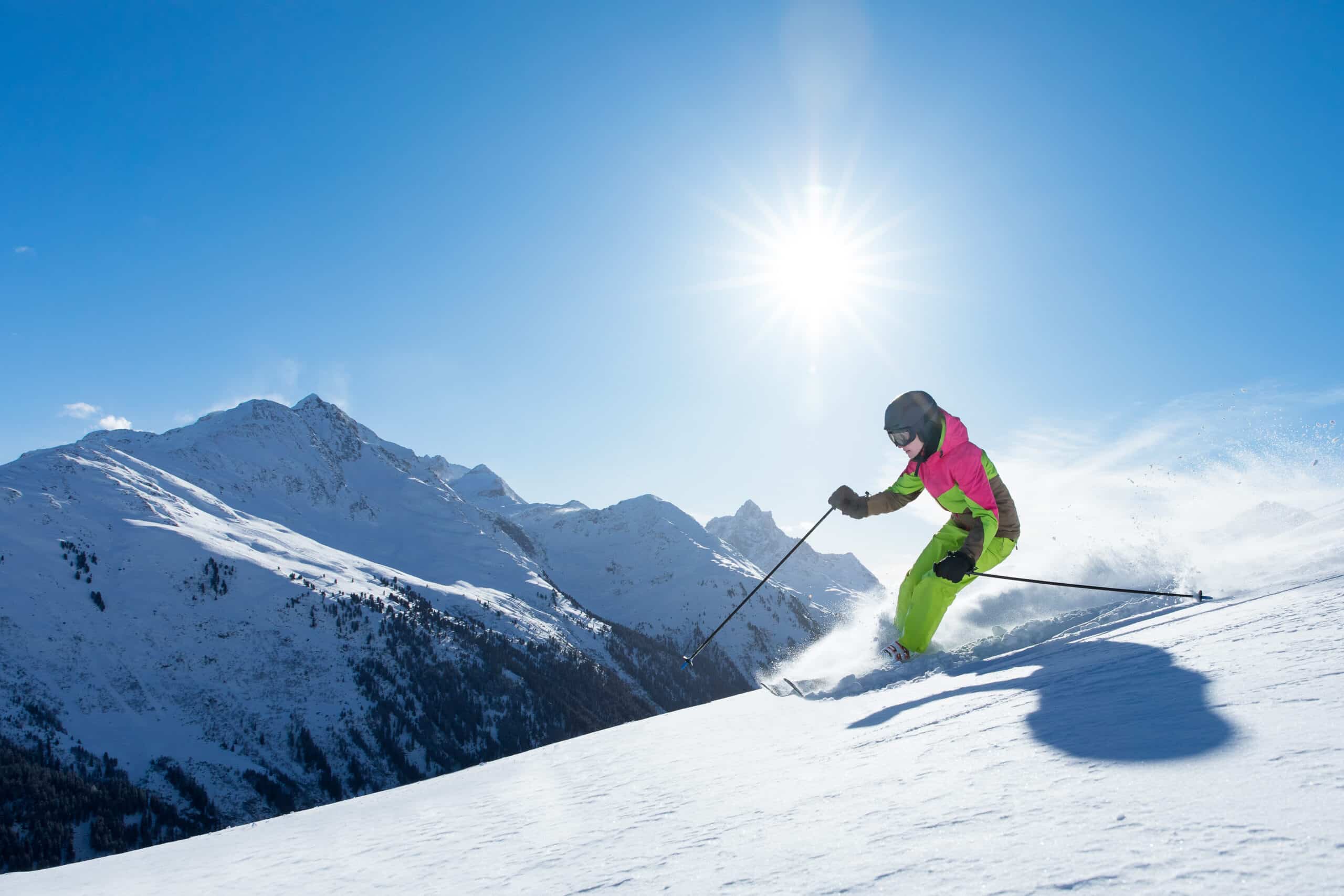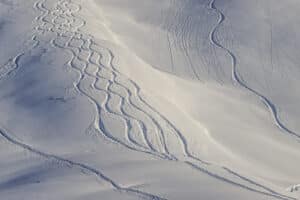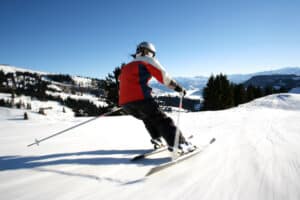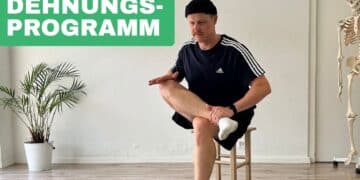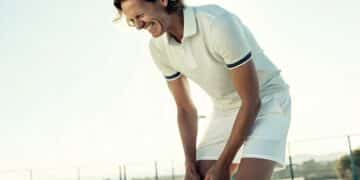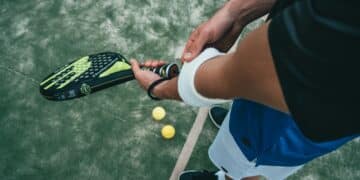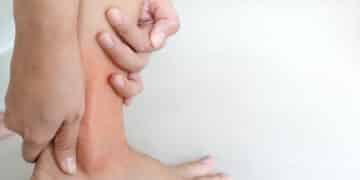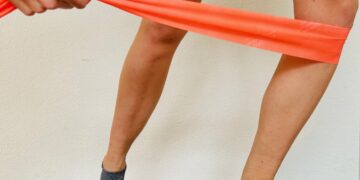Fit for the ski season - faster & more targeted ski preparation thanks to a neuro-focused approach
Ski preparation Zurich: Neuro-focused training for safe performance on the slopes at Physio Waidfuss
The first snow falls, the anticipation grows: The ski season is approaching! But before you conquer the slopes, it's important to prepare Ski preparation crucial. Skiing requires strength, endurance and, above all, excellent brain-body communication. Good fitness increases fun and is the best injury prevention.
This guide from Physio Waidfuss in Zurich shows why preparation is important and how an integrated approach - combining classic exercises with modern neuro-centered principles - can help you prepare optimally for the Ski preparation adjust. This allows us to identify your individual weak points more quickly and make you fit in a targeted manner.
Why preparation is essential: more than just muscles
Skiing places unusual demands on the body: eccentric muscle work, constant core stabilization and fast reactions. Statistics show: Lack of fitness and tired control systems (brain!) are the main causes of accidents, especially in the afternoon. A comprehensive Ski preparation can be decisive here.
The knee is most frequently affected (e.g. cruciate ligament rupture). Well-trained muscles AND precise neural control stabilize the joint and significantly reduce the risk. It's not just about how strong a muscle is, but how well your brain uses it at the right moment. This is a central aspect of our Ski gymnastics preparation.
11 exercises to prepare you for winter skiing
A holistic approach: brain and body as a team
An effective program is based on strength, coordination & balance and endurance. The decisive factor for faster success in your Ski gymnastics is the neuro-centered approach, which is integrated into all areas as a basic principle.
The neuro-centered principle: input before output! The new ski gymnastics.
Your brain controls every movement according to the principle: input -> processing -> output.
- Input: Information from the eyes (visual), balance organ (vestibular) and body (proprioceptive: joints, muscles, skin).
- Processing: The brain analyzes the inputs and checks for "safety".
- Output: The resulting movement (strength, coordination, speed).
Problem: If the input is unclear or contradictory (e.g. poor balance, inaccurate joint perception), the brain classifies the situation as "unsafe" and reduces the output -> less strength, poorer coordination, higher risk of injury due to compensation.
Solution: We first test your input systems (short, targeted tests in practice) and specifically improve the weakest channel. In this way, we create a "safer map" in the brain, which leads to better output. This is a core part of our effective Ski preparation.
Pillar 1: Strength for legs and core - with precise control
Strength is created when your brain gives the "green light". We integrate neuro-centered drills to improve the quality of input during strength exercise and thus improve your Ski preparation to optimize.
Exercise 1: Squats
Effect: Strengthens leg/gluteal muscles - your "shock absorbers" on the slopes.
Execution: Stand hip-width apart, lower your buttocks, back straight. Knees stable over the feet.
Neuro-integration:
- Visual: Fix your gaze firmly on a point in front of you (anchor!).
- Vestibular: Keep your head neutral (do not look down/up).
- Proprioceptive: Make sure that the pressure is evenly distributed under both feet (foot mapping).
Individualization (example): If the test shows a vestibular weakness, integrate slow, controlled head tilts during the holding phase at the bottom. If foot perception is poor: foot mapping beforehand. Asymmetries? -> Test one-legged variations!
Volume: 3 sets of 10-15 repetitions.
Exercise 2: Lunges
Effect: Trains thighs/glutes, improves knee/ankle stability.
Execution: Take a big step forward, bend your knees (front approx. 90°), back knee just above the floor. Front knee over ankle joint. Push back, change sides.
Neuro-integration: As with squats (stable gaze, neutral head, foot pressure). Additional focus on precise landing of the front foot.
Scope: 3 sets of 10-12 repetitions per side.
Exercise 3: Side Plank
Effect: Strengthens the lateral trunk for stabilization.
Execution: lean on forearm (elbow under shoulder), lift hips (body line), tense abdomen/buttocks.
Neuro-integration:
- Visual: Fix your gaze straight ahead.
- Breathing/interoception: Calm, deep abdominal breathing (calms the system).
- Vestibular (optional): Slow head rotations (only if stable!).
Range: 3 sets, hold for 30-45 seconds per side.
Pillar 2: Coordination & Balance - Finding the real reason
Balance problems are caused by incorrect input. We find the cause! This is a crucial part of your Ski preparation.
Exercise 4: One-legged stand (as a test & exercise)
Effect: Improves balance and joint stability.
Execution: Stand on one leg (slightly bent), lift the other.
Neuro-diagnostics:
- Eyes open vs. closed? (-> visual dependency?)
- Head neutral vs. turned/tilted? (-> vestibular involvement?)
- Does the ankle joint sway a lot? (-> proprioceptive deficit in the foot/leg?)
Neuro-integration (depending on the test result):
- Vestibular weak? -> PRE-exercises (see below) during the leg-in process.
- Proprioceptively weak? -> Foot/ankle mapping beforehand or consciously vary foot pressure.
- Visually dependent? -> Consciously let your gaze wander into the distance or train your peripheral perception.
Range: 3 sets, hold for 30 seconds per side.
Exercise 5: Standing balance
Effect: Strengthens the core, improves balance and body control.
Execution: On one leg, lift upper body forward, other leg straight back (body line), arms at sides. Controlled back.
Neuro-integration: Very slow execution. Fix your gaze on a fixed point on the floor. Focus on the movement in the hip joint.
Volume: 3 sets of 8-10 repetitions per side.
Exercise 6: Balancing on an unstable surface (e.g. balance cushion)
Effect: Challenges deep muscles and responsiveness.
Important note: This exercise increases the difficulty unspecifically and can overstrain an insecure brain ("threat"). Only use this exercise if your balance is good on stable ground and you want to train your ability to react. Targeted drills on solid ground are often more effective!
Alternative: Light, unexpected pushes (perturbations) by the therapist while standing on one leg on firm ground.
Circumference (if used): 3 sets, hold for 30-45 seconds.
Exercise 7: Jump rope
Effect: Promotes coordination, bounce and endurance.
Execution: Simple two-legged jumps, variations possible. Even rhythm, springy from the ankles.
Neuro-integration: gaze fixed, head neutral. Vary the rhythm.
Scope: 3 sets of 1-2 minutes each.
Pillar 3: Endurance - Efficient and conscious
Good stamina protects against fatigue accidents. An important aspect of Ski preparation.
Recommendation: 2-3 times a week 30-60 min. jogging, cycling, swimming.
Neuro-integration: focus on continuous nasal breathing (improves oxygen uptake and calms the nervous system). Consciously pay attention to body awareness (pacing, exhaustion signals).
Pillar 4: Neuro tools for fine-tuning - tackling deficits in a targeted manner
These exercises are ideal for addressing specific weaknesses found in the assessment and can be perfectly integrated into your warm-up or other exercises to improve your Ski preparation to perfection.
Exercise 8: Gaze stabilization (VOR - vestibulo-ocular reflex)
What: Fix your thumb, slowly move your head left/right and up/down. Keep your gaze fixed on your thumb.
Why: Trains the interaction of the vestibular system and eye muscles for a clear view despite movement - essential on rough slopes.
Integration: Before balance exercises or during static holding exercises (e.g. squat hold). Important: Adjust speed and range of movement individually (no dizziness/discomfort!).
Exercise 9: Joint circles (joint mapping)
What: Very slow, large, controlled circles with ankles, knees and hips. Full concentration on the feeling in the joint being moved.
Why: Improves the "map" of the joint in the brain (proprioception) - the basis for precise ski control.
Integration: As part of the warm-up, especially for the joints that will be loaded immediately (e.g. foot/knee circles before squats). Important: Only work in a pain-free area!
Exercise 10: Cross crawl
What: Stand loosely. Right hand taps left thigh, left hand taps right thigh. Alternate, rhythmically.
Why: Promotes communication between the left and right side of the brain/body for fluid turns.
Integration: Perform while walking in place or walking slowly. Vary the rhythm (e.g. with a metronome app).
Exercise 11: Catching/throwing the ball
What: Catching a soft ball (thrown to you or thrown up by yourself). Focus on quick reaction.
Why: Trains reaction time and hand-eye coordination for unexpected situations.
Integration: Perform while standing on one leg. Have balls thrown from the peripheral field of vision. Use different ball sizes/colors (stimulates the visual system differently).
Your individualized training plan for ski preparation
Start: Ideal: 6-8 weeks before the first day of skiing.
Frequency: 2-3 times/week strength & coordination (approx. 30 min.), 2 times/week endurance.
Neuro-Tools: A few minutes a day, ideally integrated into the warm-up or as short breaks.
Warm up/cool down: Always warm up for 5-10 minutes. Stretch lightly after training.
Important: This plan is a basis. At Physio Waidfuss, we adapt it precisely to your needs and weak points after a brief neuro-based analysis! An optimal Ski preparation is our goal.
Conclusion: Faster fit, safer on the slopes - with brains!
This integrated approach lays the foundation for a fun and safe ski season. By not only training your muscles, but also specifically optimizing the control of your brain, you will achieve your goals faster and more effectively. Your Ski gymnastics Preparation is in the best hands with us.
Do you have questions, pain during exercises or would you like a tailor-made program after a neuro-centered analysis? Get in touch with us! We at Physio Waidfuss at Hönggerstrasse 118 in Zurich are your experts for movement and your Ski preparation.
Book your appointment - online or on 044 585 99 49. We'll get you fit for the slopes - with brain and heart!
Stretching program
Your stretching program Stretching is an essential foundation for your mobility and well-being....
Read moreSports accident - muscle and tendon injury
Traumatic muscle and tendon injuries: Challenges in sport and the importance of physiotherapy in sports injuries...
Read moreBursitis of the knee: causes, symptoms and treatment options
What is inflammation of the bursa (bursitis) in the knee? An inflammation of the bursa, also known as bursitis, is a...
Read morePatella tip syndrome
Patellar tendinopathy: Pain in the knee - Effective treatment at Physiotherapie Waidfuss Patellar tendinopathy is a...
Read moreTennis elbow or golfer's elbow? Causes, symptoms and treatment
Tennis elbow can severely restrict your mobility and cause unpleasant pain in the elbow. This...
Read moreAnkle sprain - causes, treatment & tips for recovery
The way back to sport after an ankle sprain Whether during an intensive game of basketball, jogging on uneven ground or...
Read moreAchilles pain? These methods really help
Achilles tendon pain: causes, symptoms and treatment options What is Achilles tendon pain? The Achilles tendon...
Read moreCruciate ligament injuries: Everything you need to know
Physiotherapy Waidfuss Wipkingen: Comprehensive care for cruciate ligament injuries Cruciate ligament injuries are common...
Read more
